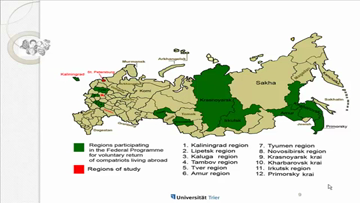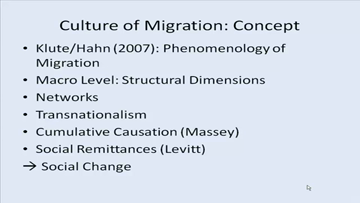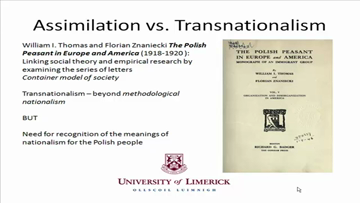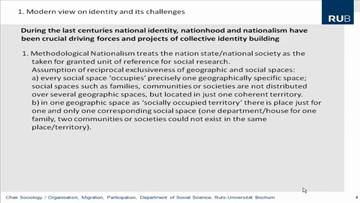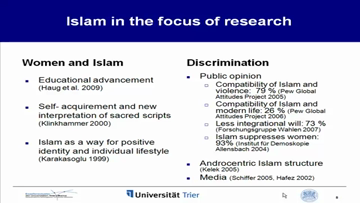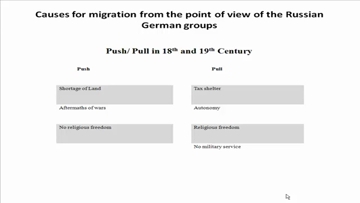Evolving Patterns of Migration
Shuttle Migration and Long-Term Emigration from Central Asia to Russia
For a long time the post-Soviet world had been forgotten by the major international studies on migration. But today Russia is the second-ranked country in the world after the United States (38 million) in terms of migrant intake. Within this post-Soviet space, Central Asia occupies a unique place. Since the start of the 1990s, it has been the main purveyor of migrants thanks to the “return” of Russians and Russian-speaking population to their kin-state. The region has entered into large-scale schemes of migration whose impact is similar to the major “exporter” regions of migrants such as Central America.
Marlène Laruelle discusses the impact of both “shuttle migration” (seasonal migration depending on specific working opportunities) and “permanent emigration” of Central Asians in Russia. She addresses different elements of these social evolutions: 1. evolving mobility patterns, 2. changes in the social fabric, 3. new community strategies in migration, and 4. forging a new civic consensus in Russia.
Marlène Laruelle is a Research Professor of International Affairs at the Institute for European, Russian and Eurasian Studies (IERES), George Washington University. Her main areas of expertise are Russia’s domestic evolutions, identity issues, nationalism, citizenship and migration in the post-Soviet space.
Panel VI: The Formation of Identity in Transnational Migratory Processes - October 15th, 2011
The Resilience of People in Motion
-
54498 Hits
-
|
-
2 Votes
-
|
-
16 Beiträge
Processes of immigration, transmigration, and remigration in the wider Europe today
Europe is a continent shaped by migration. Every year millions of people are migrating into the European Union. Others are emigrating from EU member countries. Many are leaving their homes and are trying to integrate into the host country, while others circulate between their home country and their “new home”, leave the country of entry, returning back to their “country of origin”, or they even migrate on to third countries.
Migration is a complex process with constraints and opportunities. Its flows have created different patterns, regimes and even cultures of migration. It involves voluntary and involuntary aspects, economic and non-economic issues, constructions and reconstructions between physical and symbolic spaces. This stipulates also new ways of theorizing and researching in the field.
Strategies of Survival, Strategies of Resistence
Migrants and migratory groups adopt as well as resist to challenges and expectations by the mobility itself or the receiving society. They perform resilient and innovative strategies of survival.
They are resilient by maintaining their culture(s), system(s) of belief, traditions, way of life etc. Yet, they are innovative being open for change, being transformers, innovators, entrepreneurs themselves. Therefore, adoption, change and/or innovation vs. resistance, continuity and/or resilience have to be seen as part of the migratory agency. The migrants’ culture of resilience, meaning the maintenance of core elements of their livelihood, has to be conceptualized in an ever changing world challenging the integrity and cohesion of any, but especially migratory groups.
The Conference
The aim of the conference is to discuss new theoretical approaches, methodologies and empirical research results on immigration, transmigration and re-migration topics. It focusses on changing European migration regimes and discourses since the fall of the iron curtain until today.
Contact
Prof. Michael Schönhuth
University of Trier
Universitätsring 15
D-54286 Trier
+49-(0)6 51-201-27 10 (Office)
http://transmigration.eu/
Zu
The Resilience of People in Motion
